Portal of Juglandaceae now is available ! Please read our document first.
- Female flower
- Male flower
- Fruit morphology
- Chemical composition
Introduction
The Carya illinoinensis is a monoecious plant. After long-term history of evolution, most of its varieties are expressed as dichogamy, which can avoid self-pollination and improve the quality and yield of the fruit, thus improving its heritage diversity. In production and cultivation, most varieties need to use artificial aided pollination, which can achieve high yield and stable production. Therefore, observe and summarize the phenological period of excellent varieties, master their flowering habits, and lay a good foundation for rational allocation of varieties to ensure high yield and stable yield.
Female flower phenology dynamic process






Female flowers divided into five stages:Female flower squaring stage, female flower stigma angle 0 °-45 °, stigma angle 45 °-90 °, stigma angle >90 ° and the end.
In the squaring stage, several green dots appear at the top of the flower bud, the small dot is the stigma of the female flower bud, and the ovary below the stigma. The dots continue to develop and become a two-cylinder stigma. During this period, the two-cylinder stigma is in a closed state and has no fertilization ability.
Opening angle of the two-cylinder head becomes larger within 0-°45° and gradually increases.
The angle of the two-splitting stigma becomes 45°-90°, at which time the flower enters the grantable period.
The pollination success rate is highest when the head angle of the splitting stigma is close to or greater than 90 °.
Classification of female flower types







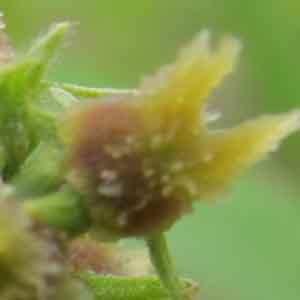


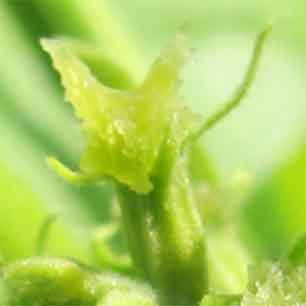







Introduction
The Carya illinoinensis is a monoecious plant. After long-term history of evolution, most of its varieties are expressed as dichogamy, which can avoid self-pollination and improve the quality and yield of the fruit, thus improving its heritage diversity. In production and cultivation, most varieties need to use artificial aided pollination, which can achieve high yield and stable production. Therefore, observe and summarize the phenological period of excellent varieties, master their flowering habits, and lay a good foundation for rational allocation of varieties to ensure high yield and stable yield.
Male flower phenology dynamic process









Flower opening process of the pecan male flower can be divided into 8 periods:
Inflorescence expansion, flowering axis elongation, flower bud cracking period, anther colour from green to yellow stage, early powder period, prosperous powder period, later powder period and flower (anther) shedding period.
The male flowers began to sprout in early or mid-April, as shown by the scales and bracts of the flowering buds.
After that, the morphology changes, and the elongation changes into male inflorescence. It is placed in the upper part of the 1-year-old branches. Each male flower is composed of hundreds of small flowers, and the small flowers are spirally arranged on the inflorescence axis to form the inflorescence.
As the flower grows, the color will change. When the flower turns from green to yellow, it will enter the powder period.
After entering the powder period, the small flowers will emit pollen. After the powder period, the inflorescences turn brown, and soon after they fall off.
Introduction
Measurement and visualization of different seed morphological indexes of excelent pecan cultivars.
Different Indexs
Fruit shape index = Fruit length / Fruit width
Seed shape index = Seed length / Seed width
Fresh fruit weight Barplot

Pecan Gallery

A quick look at variance in nuts shape of different cultivars


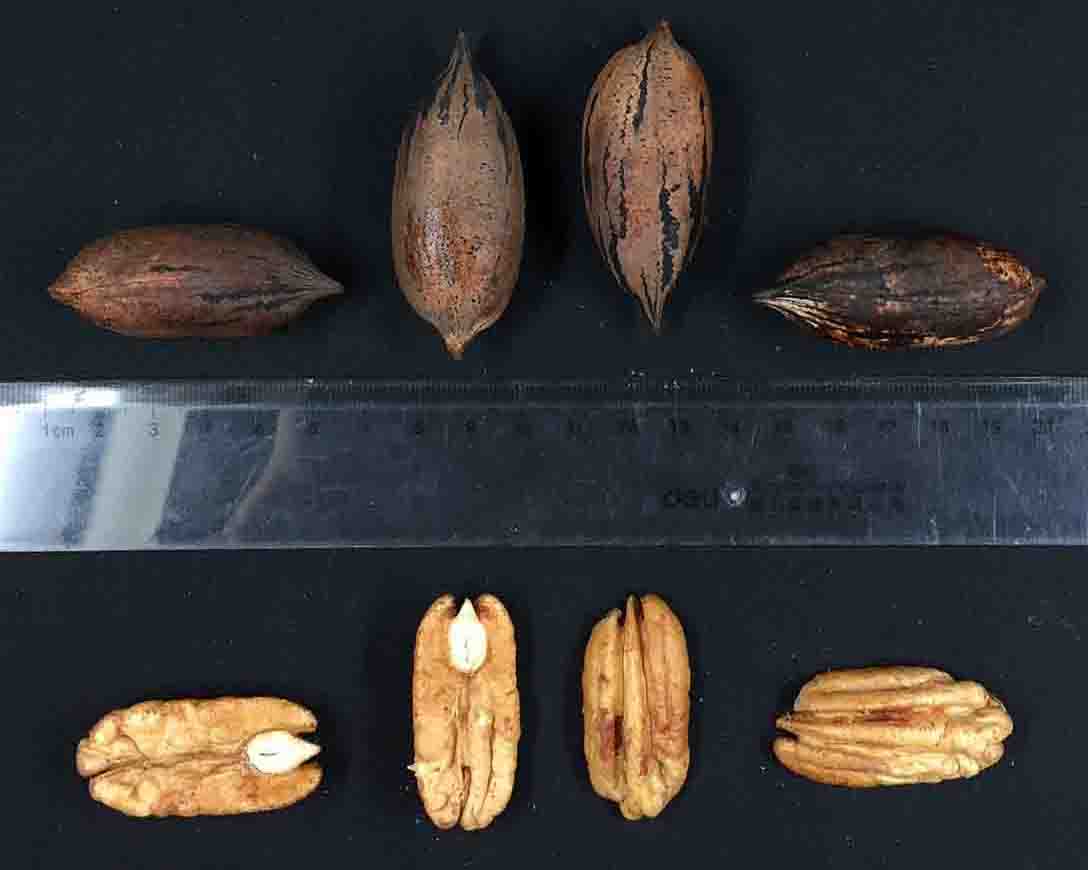

ZL2
ZL9
ZL10
ZL13




ZL40
ZL41
ZL43
ZL45

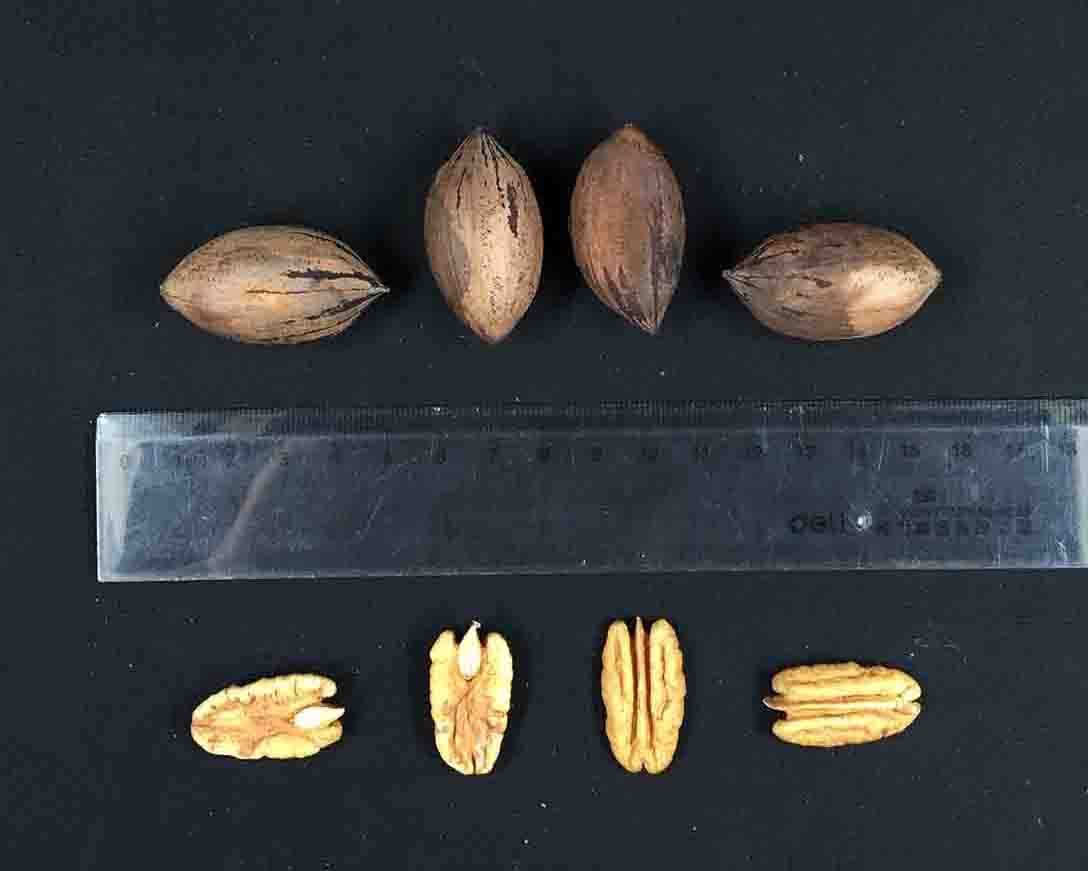
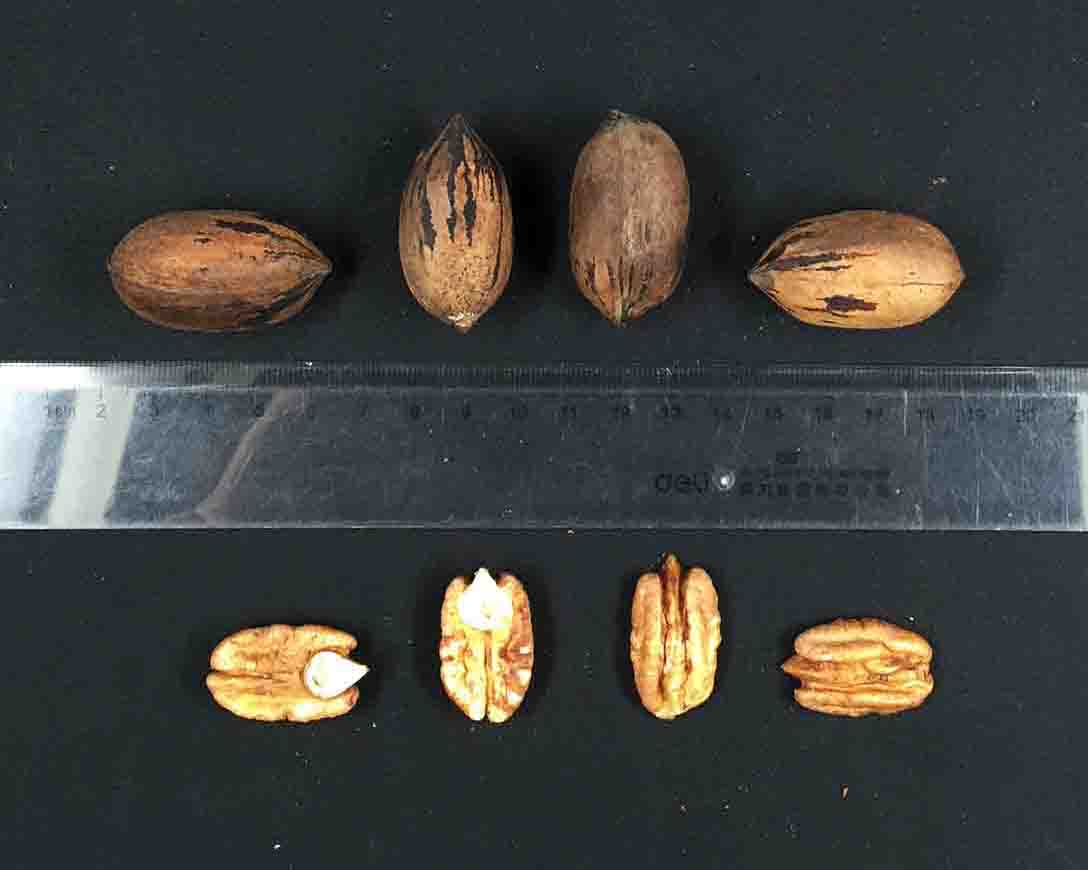
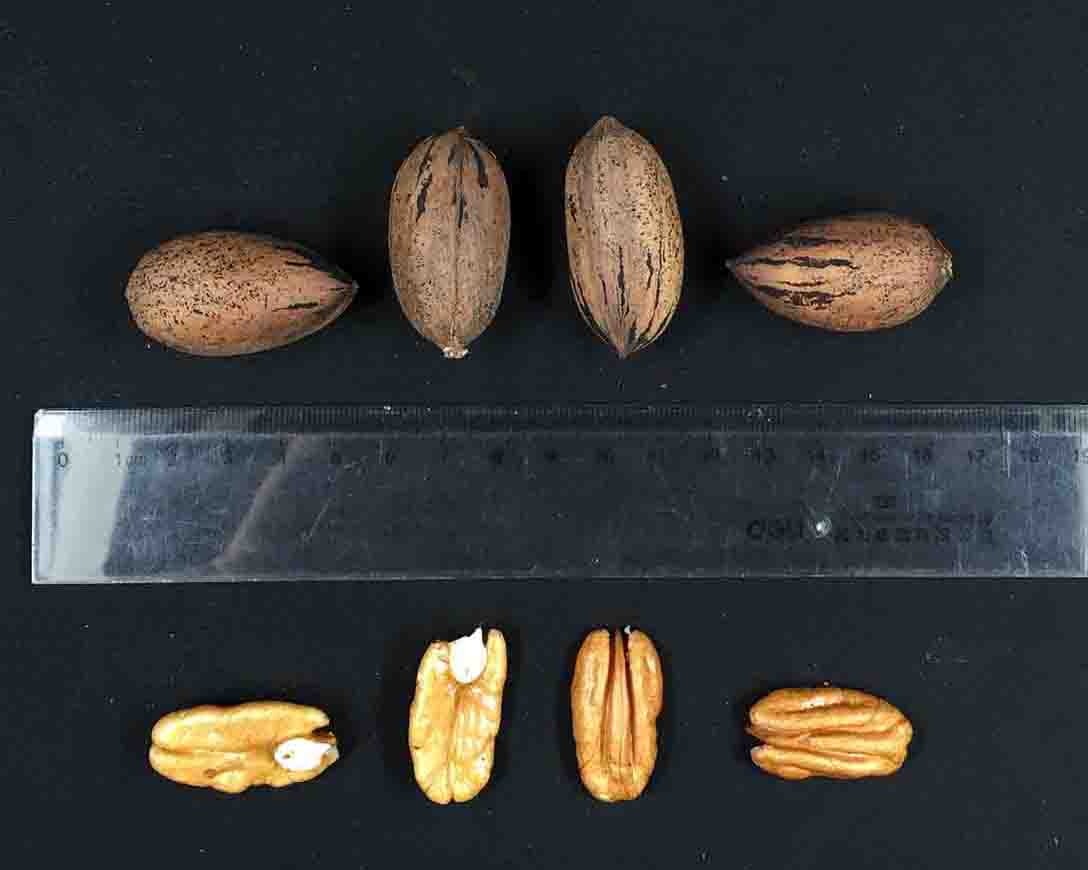
ZL47
ZAFU3
YONGKANG
DONGYANG1
Fatty acid component content
Fatty acid composition of seed is an important indicator for evaluating the quality of Carya illinoinensis germplasm resources. The nut contains 68%~82% oil, including 6 kinds of lipids, which are in line with phospholipid, monoglyceride, α, β-bis-anhydride, sterols and triglycerides, thin shell mountain Walnut oil contains more unsaturated fatty acids, the content is as high as 97%, better than oil tea, walnut oil, peanut oil, cottonseed oil, soybean oil and corn oil. The highest content of unsaturated fatty acid components is oleic acid, followed by linoleic oil. Fatty acid can reduce low-density cholesterol levels in the blood.
Palmitic acid component Barplot

Amino acid component content
Carya illinoinensis nuts contain various amino acids that are beneficial to the human body. Usually the protein content of the kernel is between 9 and 18%, depending on the variety. In addition to providing nutrients, proteins also play an important role in the entire functional ingredient.
Aspartic component Barplot




